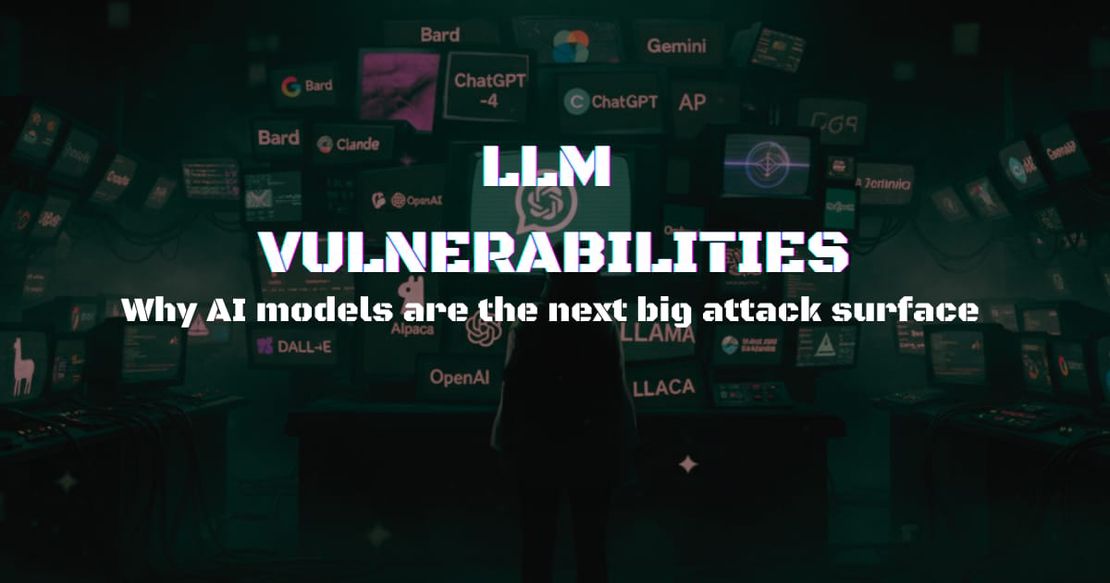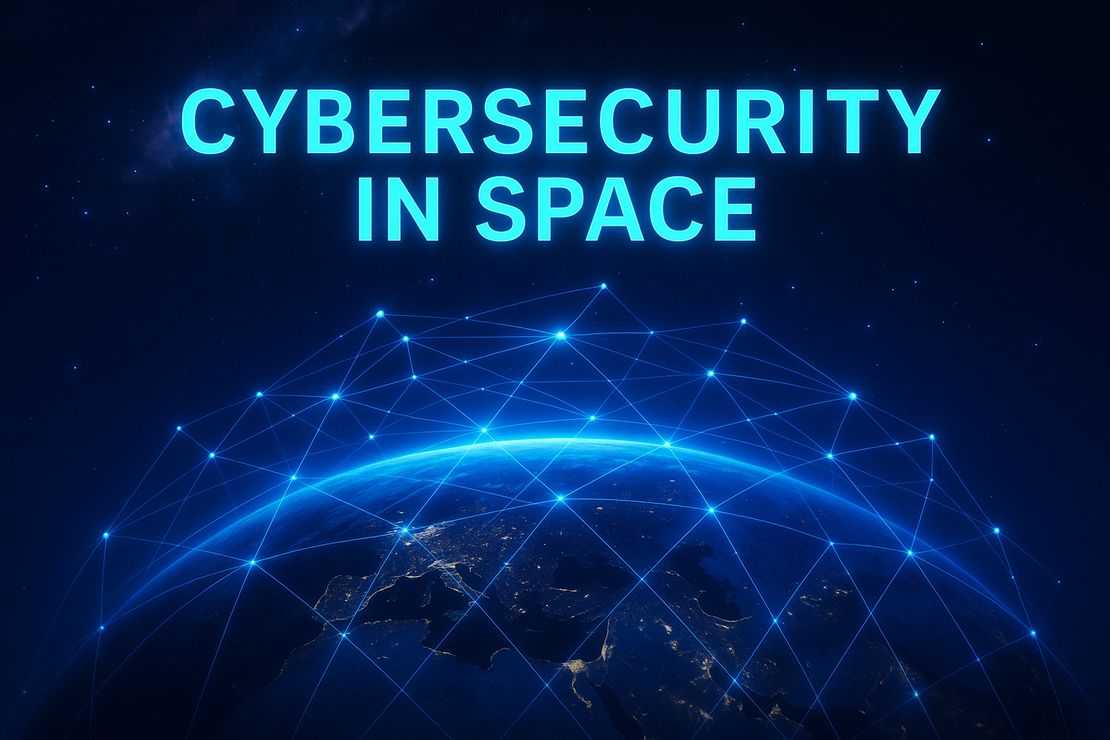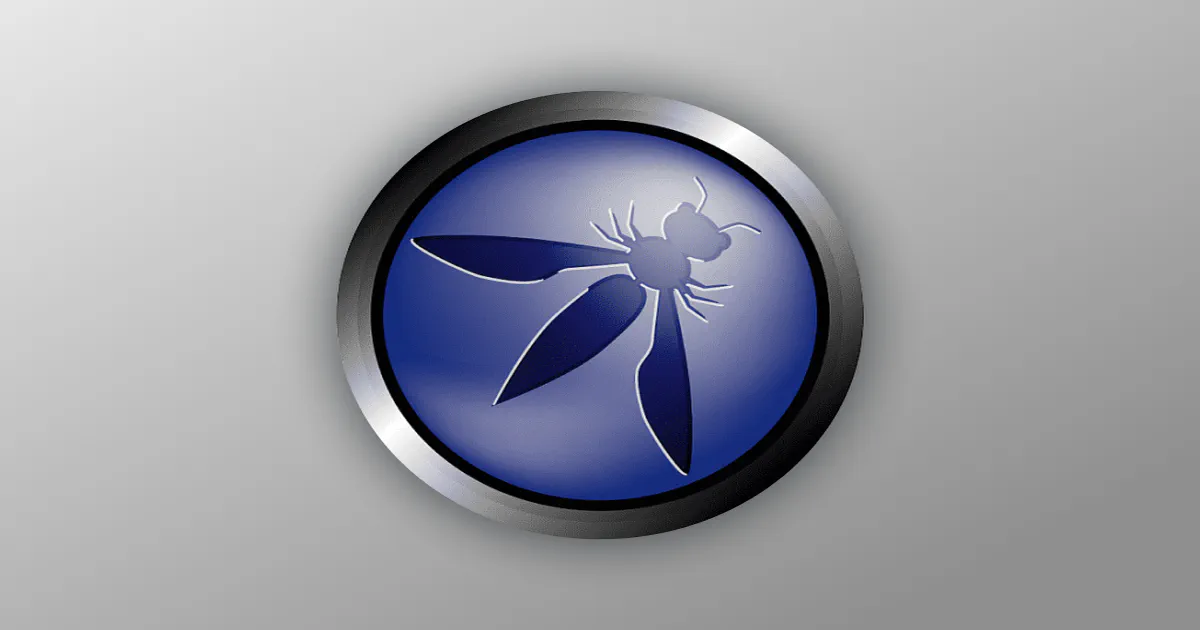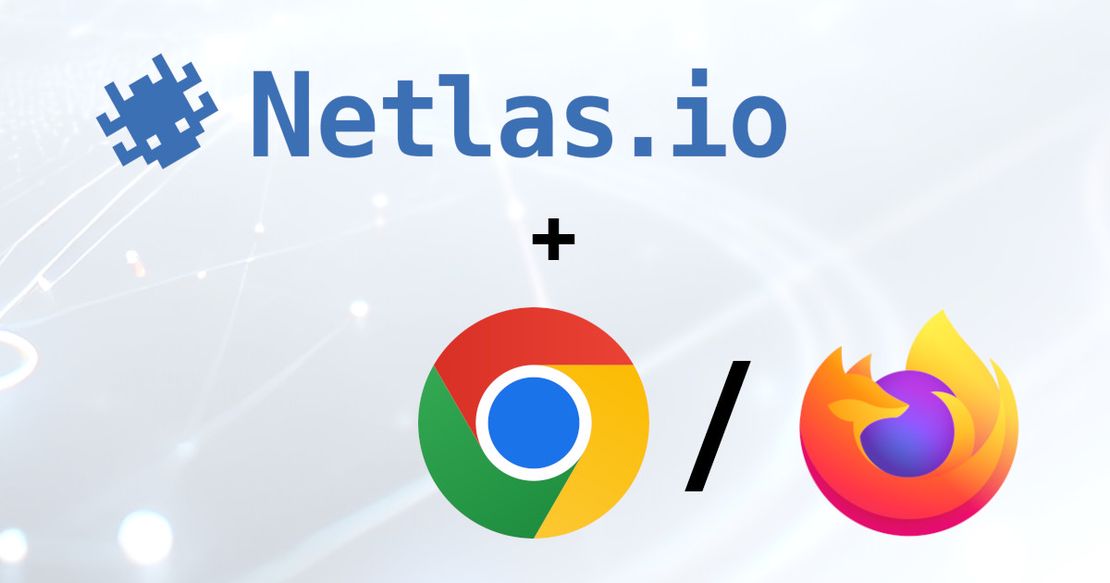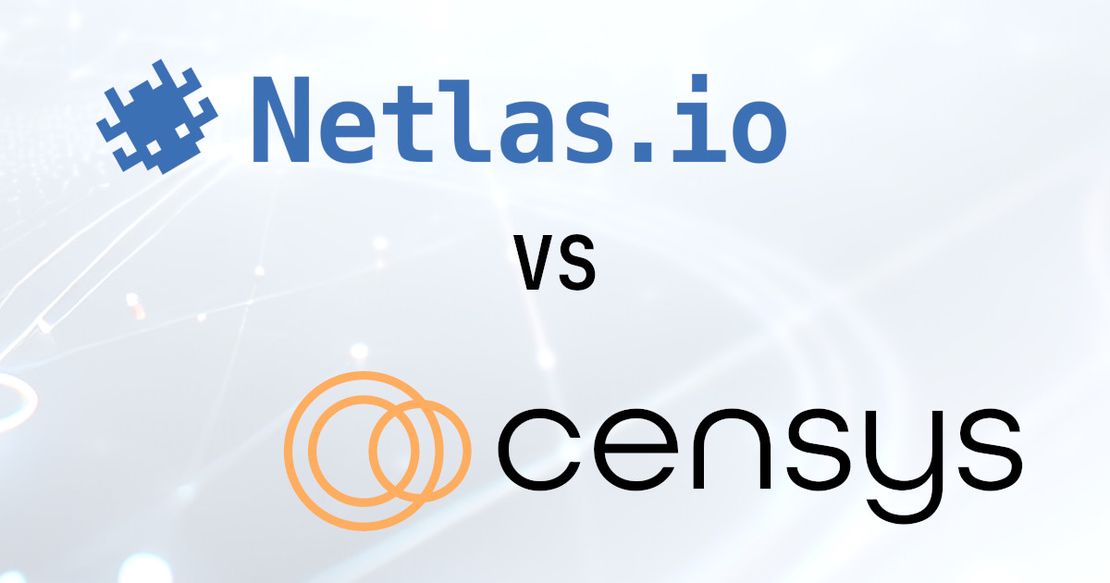OWASP: Top 10 Web Application Security Risks
July 3, 2025
18 min read
Software development is essential in a world where nearly everything and everyone is connected to the internet, as well as for the success of modern enterprises. In today’s digital age, applications exist for almost every need, and with the swift growth of the Internet of Things (IoT) paired with the constantly advancing app market, companies are eager to be the pioneers in launching innovative software.
In today’s competitive market, 38 % of developers released updates monthly or more often in 2019. Yet rushing often relegates security to the final phase, giving AppSec teams minimal time to find and fix vulnerabilities before release.
To address mounting cyber risks, organizations are embedding AppSec earlier—but many programs remain immature or under‑resourced, so OWASP continues to serve as a vital guide.
What is OWASP Cyber Security?
OWASP (Open Web Application Security Project) is a nonprofit, open‑source community founded in 2001 that helps businesses and developers improve application security. With over 10,000 members and 275 local chapters worldwide, it offers free tools, projects, documentation, and training events to anyone interested in securing software.
Best known for its OWASP Top 10 list of common web‑app vulnerabilities, OWASP’s broader portfolio covers numerous security risks and frameworks. Engaging with its initiatives or local chapters provides both practical guidance and valuable networking opportunities.
Understanding the OWASP Top 10: Key Web Application Security Risks
At its core, OWASP’s flagship project is the OWASP Top 10—a periodically updated list (every 3–4 years) of the most critical web‑app vulnerabilities. It outlines each risk’s impact and offers mitigation strategies.
The 2021 edition adds three new categories, renames and broadens four, and consolidates others from the 2017 list. Let’s dive into those ten key risks.
Broken Access Control
Broken Access Control has climbed to number 1 on the OWASP Top 10, as its 34 related CWEs now appear more often in applications than any other flaw. When access‑control checks aren’t uniformly enforced, attackers can bypass authentication and act with elevated privileges or view data belonging to other users.
To prevent it, apply a consistent, centralized access‑control framework; disable directory listings; log every authorization failure; enforce 2FA/MFA everywhere; promptly deactivate idle accounts; and remove unneeded server services.
Let’s look at examples of BACs that have appeared on the cyber battlefield in recent times. From here on, for some vulnerabilities and products, Netlas queries will be suggested.
CVE-2024-38816. This vulnerability affected the Spring Framework, had 7.5 severtiy score, and was published in the fall of 2024. It corresponds to CWE-22 “Path Traversal”. With its help, an attacker could gain access to any file in the system by composing a special HTTP packet. The vulnerability is described in more detail in the corresponding advisory. To check the availability of Spring instances from Internet, the following query can be used in Netlas:
tag.name:"spring".CVE-2025-6765. A recent vulnerability, dating back to late June 2025. It has a severity score of 6.3 and is a CWE-275 “Permission Issues” type. According to NVD, the exploit is available in the wild, and the vendor has done nothing after being alerted to the issue.
CVE-2025-29927. A vulnerability of type CWE-285 “Improper Authorization” that affected multiple applications on the Next.js framework. It was published in March 2025 with a severity score of 9.1.
Cryptographic Failures
Cryptographic Failures (formerly “Sensitive Data Exposure”) covers flaws in encryption that lead to unauthorized data disclosure and system compromise. When applications don’t properly encrypt or protect sensitive information—login credentials, PII, financial or health data—attackers can intercept, alter, or steal it, for example via man‑in‑the‑middle attacks.
To mitigate this risk, you should identify and classify all sensitive data; enforce strong encryption at rest and in transit; implement robust key‑management practices; limit storage to only essential sensitive information; and disable caching of confidential data.
CVE-2023-23919. DoS in Node.js applications caused by issues with the OpenSSL error stack. Although this case does not involve errors directly in cryptographic mechanisms, it is identified as CWE-310 “Cryptographic Issues”. You can read more about this vulnerability in the advisory compiled by IBM. The vulnerability had a Medium severity score of 5.9.
CVE-2023-34338. Hardcode vulnerabilities are always interesting and a little funny. In this particular case, we are dealing with the CWE-321 “Use of Hard-coded Cryptographic Key” type. The vulnerability in question was discovered in the BMC from AMI and allowed an attacker to use a hard-coded cryptographic key by a hard-coded certificate, which then threatened the functioning of the device and its privacy. According to NVD, the severity score is 9.8, vendor’s advisory estimates it lower - 7.1.
CVE-2024-6508. CWE-331 “Insufficient Entropy” is a truly “cryptographic” type of vulnerability. It consists of insufficient entropy of algorithms, which allows identifying certain patterns when selecting secrets. The vulnerability given as an example allowed an attacker to easily log into a user Openshift Console account due to errors in the OAuth2 protocol.
Injection
Injection has fallen to #3, now encompassing XSS under its broader umbrella. It occurs when untrusted input is interpreted as code or commands — enabling attackers to run unintended queries (e.g., SQL, NoSQL, OS, LDAP) — and can lead to data loss, theft, denial of service, or full system takeover.
Prevent it by strictly validating and sanitizing all inputs, using parameterized queries or prepared statements to separate code from data, and enforcing least‑privilege database accounts.
However, it may be that somewhere on your site there is already a vulnerability that you have not noticed. Or you are a bug bounty hunter and want to find injections as part of your work. In order to passively detect input forms and potentially vulnerable pages, you can use IoT search engines. For example, Netlas. This is what a request designed to find one of the possible types of input forms would look like:
uri:*home.php\?*By combining different requests and creating your own, you can detect either injections themselves or product pages that are already vulnerable to them.
Examples of recent vulnerabilities:
CVE-2025-6709. In this case, we are dealing with CWE-20 “Improper Input Validation”, which affected the MongoDB database, specifically a server component. The ability to perform an injection allowed attackers to cause servers down, often without authentication. Severity score - 7.5, more details about this vulnerability can be found in the advisory.
CVE-2025-47110. This vulnerability is an injection within Adobe Commerce and corresponds to the CWE-79 “Improper Neutralization of Input During Web Page Generation (‘Cross-site Scripting’)” type. An attacker with sufficient privileges could exploit it and get the ability to execute malicious code directly in the victim’s browser. You can read more about this in the vendor’s advisory, which assigned this CVE a severity score of 9.1.
CVE-2025-23209. Vulnerability of type CWE-94 “Improper Control of Generation of Code (‘Code Injection’)” in the well-known CraftCMS, which could hypothetically lead to RCE on the victim’s machine. You can read more and see the links on the corresponding NVD page.
Insecure Design
Insecure Design, introduced in 2021, spotlights broad design and architectural weaknesses that emerge when security isn’t embedded before coding begins.
To mitigate it, involve AppSec teams early—use threat modeling, enforce secure design patterns and business‑logic validation, limit resource consumption, and run integration tests to ensure critical workflows withstand identified threats.
Some vulnerabilities with this type:
CVE-2024-8306. The first weakness we will mention is CWE-269 “Improper Privilege Management”. This particular CVE originated in Schneider Electric’s Vijeo Designer and allowed an attacker to gain unauthorized access to a workstation. The vulnerability was assigned a severity score of 7.8, and you can read more about it in the corresponding bulletin.
CVE-2023-44098. This vulnerability corresponds to the CWE-311 “Missing Encryption of Sensitive Data” type and affects the Huawei EMUI shell. Successful exploitation allows an attacker to compromise the confidentiality of the service, the severity score is 7.5.
CVE-2024-23682. In this case, we encounter CWE-501 “Trust Boundary Violation”. The vulnerability was discovered in Artemis Java Test Sandbox and allowed an attacker to escape from the sandbox. More details are available in the advisory dedicated to this issue.
Security Misconfiguration
Security Misconfiguration covers flaws from improper hardening or default settings — like unused services left enabled, default credentials unchanged, or verbose error messages exposing details. These issues can exist at any layer (servers, frameworks, containers, etc.) and are widely exploited to access systems. Mitigate by disabling unneeded features, applying patches and secure configurations automatically, and limiting error output to generic messages.
Let’s look at some examples of CVEs of this type.
CVE-2023-2790. The first vulnerability has CWE number 260 and is called “Password in Configuration File”. This weakness is somewhat similar to the hardcodes mentioned above, since it means that users can access a password written in a file they should not have access to. In the case of this particular CVE, TOTOLINK devices were hit. However, the severity score is not that scary - 5.5 from NVD, and 2.3 from VulnDB.
CVE-2023-27998. Next up is CWE-756 “Missing Custom Error Page”. As the name suggests, this weakness is the lack of a custom error page. In this case, when a user receives an error, they see the web server’s response, which they can use to draw conclusions about the application’s configuration. The vulnerability listed here affected Fortinet FortiPresence and had a score of 5.3. You can read more about it in the vendor’s bulletin.
CVE-2024-6739. This vulnerability belongs to the type CWE-1004 “Sensitive Cookie Without ‘HttpOnly’ Flag”. It affected MailGates and MailAudit products and allowed attackers to steal session cookies via XSS injection.
Vulnerable and Outdated Components
Known Vulnerable Components (formerly “Using Components with Known Vulnerabilities”) has climbed from #9. It arises when out-of-date libraries, frameworks, or modules—with the same privileges as your app—harbor unpatched flaws. Attackers exploit a single vulnerable component to compromise countless sites (e.g., outdated WordPress plugins).
Prevent it by enforcing strict patch management: remove unused code and docs, audit dependencies regularly, apply updates immediately, and source components only from trusted, maintained projects.
Vulnerabilities in this tier are quite rare, and it was difficult to find specific CVEs during the writing of this article. Therefore, below are examples, not all of which have a standard identifier.
Cisco Bug: CSCvu67707. An issue in the Cisco Identity Services Engine, discovered in 2023. It was found that this software contains components vulnerable to CVE-2010-2275, which, according to the weaknesses classification, belongs to CWE-937 “Using Components with Known Vulnerabilities”. You can read more on the bug page itself. It should also be noted here that according to MITRE, the use of CWE-937 and CWE-1035 is currently prohibited for real vulnerabilities.
CVE-2024-11999. However, CWE-1104 “Use of Unmaintained Third Party Components” remains quite relevant. An example is the mentioned vulnerability, discovered in Schneider Electric devices and having a severity score of 8.7. You can read more about it in the corresponding advisory.
Identification and Authentication Failures
Broken Authentication has slipped down the OWASP Top 10 as framework defaults improve. It occurs when attackers exploit weak or misconfigured login systems—using brute‑force, credential‑stuffing, stolen tokens, or session hijacks—to impersonate users and potentially seize full control.
Mitigation: enforce 2FA/MFA; never use default admin credentials; apply strong password policies (complexity, rotation, lockouts); and regenerate session IDs on each login.
There are examples of this tier vulnerabilities below:
CVE-2025-20188. A vulnerability in Cisco IOS XE that made a splash when it was released. It was discovered that the system contained hardcoded JSON web tokens (JWT), which fully complies with CWE-798 “Use of Hard-coded Credentials”. This vulnerability had the highest possible severity score (10.0) and was described in detail, including by the vendor.
CVE-2025-25227. In this case, the target was the Joomla CMS. Issue type CWE-287 “Improper Authentication” made it possible for attackers to bypass two-factor authentication. This vulnerability was assigned a severity score of 7.5, and is described in more detail in the vendor’s bulletins.
CVE-2024-56529. The next vulnerability affected the Mailcow mail server and corresponded to CWE-384 “Session Fixation”. The essence of the bug is that the system did not invalidate tokens after the user ended the session, which allowed attackers to log in under their name if they managed to find the right token. This vulnerability was assigned a severity score of 7.1, the bulletin can be found here.
Software and Data Integrity Failures
Software and Data Integrity Failures (new in 2021) covers risks from unverified software updates, CI/CD pipelines, and insecure deserialization. Attackers can inject malicious code or tamper with critical data when integrity checks are absent.
Mitigation: consume only trusted libraries and dependencies; verify update packages and data via digital signatures or checksums; segment and lock down CI/CD pipelines with strict access controls; and never process untrusted serialized data without safe deserialization routines.
Some examples:
CVE-2025-42999. Here we encounter CWE-502 “Deserialization of Untrusted Data”. A relatively recent vulnerability in SAP NetWeaver that allowed an authenticated attacker to inject malicious content that, after deserialization, led to a compromise of the system. This vulnerability received a critical severity score of 9.1, you can read more about it in the corresponding article.
CVE-2023-27977. A vulnerability found in Schneider Electric products with an average score of 6.5. It is a weakness of CWE-345 “Insufficient Verification of Data Authenticity”. Hypothetically allowed an attacker to delete files on an affected server. The vendor’s bulletin can be found here.
CVE-2025-31674. Issue type CWE-915 “Improperly Controlled Modification of Dynamically-Determined Object Attributes” (very long name). This time, Drupal was hit, the vulnerability allowed an attacker to perform PHP Object Injection, potentially reaching RCE. Severity score 7.5, you can read about it in this advisory.
Security Logging and Monitoring Failures
Security Logging and Monitoring Failures (formerly “Insufficient Logging & Monitoring”) have climbed the list as gaps in visibility and alerting now undercut breach detection—on average, attacks linger over 200 days before discovery. When events aren’t logged, contextualized, or routed to an incident‑response team, attackers can move freely, exfiltrate or tamper with data, and erase traces without triggering alerts.
To address this, implement end‑to‑end, contextualized logging across all layers; aggregate and analyze logs in real time; configure alerts for anomalous activity; and staff or outsource a dedicated Security Operations Center (SOC) to investigate and respond to incidents promptly.
CVE-2024-10863. A vulnerability in OpenText Secure Content Manager corresponding to CWE-778 “Insufficient Logging”. This CVE allowed attackers to manipulate audit logs and had a severity score of 5.1.
CVE-2024-23194. An issue corresponding to CWE-117 “Improper Output Neutralization for Logs”. It had a low severity score of 3.3 and allowed users to modify Command Centre log files. You can read more about this vulnerabiltity here.
CVE-2024-5557. In this case, we are dealing with CWE-532 “Insertion of Sensitive Information into Log File”, and Schneider Electric products are again at risk. The issue allowed an attacker to intercept SNMP credentials if they had access to log files. Severity score 4.5, vendor’s advisory is available.
Server-Side Request Forgery (SSRF)
Server-Side Request Forgery (SSRF) is a newly introduced risk in the OWASP Top 10, following its rise to prominence in the community survey, where it was voted the number one concern. SSRF refers to a vulnerability that allows an attacker to manipulate a web server into sending requests to unintended destinations, potentially bypassing security mechanisms like firewalls, VPNs, and other access controls.
To mitigate the risks posed by SSRF, OWASP suggests several preventive measures. These include disabling unnecessary HTTP redirections, thoroughly sanitizing all incoming data from clients, logging both accepted and blocked network traffic, and isolating remote resource access functionality within separate network segments to minimize potential damage.
Somewhat unique, as it only includes one CWE, number 918, and it’s called… “Server-Side Request Forgery (SSRF)”! An example of such a vulnerability is CVE-2025-25065. It was a vulnerability with a severity score of 5.3 in Zimbra Collaboration, which allowed hackers to redirect to internal network endpoints. You can read more about it on the corresponding NVD page.
Top 5 OWASP Projects and Tools to Enhance Security
As we’ve highlighted, the OWASP Top 10 list of web application security risks is their most recognized initiative, but OWASP offers many other valuable projects as well. With so many flagship, lab, and incubator projects to choose from, it was a challenge to narrow it down. However, we’ve selected our top 5 OWASP projects that stand out for their contribution to improving security (apart from the Top 10, of course).
A Powerful Tool for Cybersecurity: Amass
Amass is an open-source tool designed for DNS enumeration, external asset discovery, and attack surface mapping. It assists cybersecurity experts in conducting network mapping and uncovering external assets through various information-gathering techniques, including active reconnaissance.
An example of using OWASP Amass for reconnaissance is given below:
root@MacBook-Air ~ % amass enum -d target.com
example.com (FQDN) --> ns_record --> b.iana-servers.net (FQDN)
example.com (FQDN) --> ns_record --> a.iana-servers.net (FQDN)
target.com (FQDN) --> ns_record --> ns7-64.akam.net (FQDN)
target.com (FQDN) --> mx_record --> mxa-0020ab02.gslb.pphosted.com (FQDN)
target.com (FQDN) --> mx_record --> mxb-0020ab02.gslb.pphosted.com (FQDN)
target.com (FQDN) --> node --> plus.target.com (FQDN)
target.com (FQDN) --> node --> tepagent.target.com (FQDN)
affiliate.target.com (FQDN) --> cname_record --> sites.target.map.fastly.net (FQDN)
plus.target.com (FQDN) --> cname_record --> sites.target.map.fastly.net (FQDN)
hrocdocrequest.target.com (FQDN) --> cname_record --> sites.target.map.fastly.net (FQDN)
tepagent.target.com (FQDN) --> cname_record --> sites.target.map.fastly.net (FQDN)
fulfillmentaggregator.us-east1.tgt-pe-prod.gcp.cloud.target.com (FQDN) --> a_record --> 35.186.209.243 (IPAddress)
161.225.0.0/16 (Netblock) --> contains --> 161.225.194.224 (IPAddress)
161.225.0.0/16 (Netblock) --> contains --> 161.225.202.224 (IPAddress)
161.225.0.0/16 (Netblock) --> contains --> 161.225.84.144 (IPAddress)
...
396982 (ASN) --> announces --> 34.32.0.0/11 (Netblock)
14340 (ASN) --> announces --> 13.108.0.0/15 (Netblock)
...Best Practices for Security: Cheat Sheet Series
The OWASP Cheat Sheet Series serves as a highly valuable tool for both developers and security experts. It provides clear, actionable advice on top security practices across a wide range of application security concerns. The concise nature of the guide ensures that while it doesn’t delve deeply into complex details, it equips developers with the essential recommendations they need to implement security measures quickly and efficiently.
Some of the core security topics addressed in the Cheat Sheet Series include:
- Evaluating attack surfaces
- Establishing robust content security policies (CSP)
- Mitigating cross-site request forgery (CSRF) risks
- Strengthening database security
- Protecting against denial-of-service (DoS) threats
- Implementing comprehensive logging strategies
- Managing user session security effectively
- Using virtual patching for vulnerable components
- Ensuring proper XML security
- Enhancing authentication mechanisms
- Safeguarding sensitive data storage
By following these practical guidelines, developers and security teams can significantly improve the security posture of their applications.
Protecting User Data: Top 10 Privacy Risks
The OWASP Top 10 Privacy Risks Project offers an essential list of privacy threats and concerns within web applications, coupled with practical countermeasures. This initiative is designed to assist developers in integrating privacy protections during the application design process and provide insights into the broader consequences of mishandling personal data.
By addressing privacy risks early in the development lifecycle, the project encourages organizations to adopt secure design principles and safeguard user privacy effectively. This is increasingly important as privacy regulations such as GDPR and CCPA gain traction, making data protection a top priority for businesses globally.
Here are the 10 key privacy risks identified by OWASP for web applications, along with additional insights:
- Web Application Vulnerabilities
Web apps that lack proper security controls expose users’ personal data to attacks. These vulnerabilities could result in unauthorized access, leading to data theft or breaches.
- Operator-Sided Data Leakage
When web application operators mishandle or inadvertently leak data, users’ privacy is compromised. This includes failure to properly secure backup data, unintentional sharing of sensitive information, or even storing it in insecure locations.
- Insufficient Data Breach Response
A slow or ineffective response to a data breach can exacerbate the damage. Organizations must have a well-defined breach response plan, including notifying affected users, fixing vulnerabilities, and reporting to authorities promptly.
- Consent on Everything
Misuse of consent to the processing of personal data. In this case, the user gives consent to everything, and not to individual purposes, such as profiling for advertising or simply using the site.
- Non-Transparent Policies, Terms, and Conditions
Users must be able to clearly understand how their data is being used, stored, and shared. Ambiguous or overly complex privacy policies can undermine trust and expose organizations to regulatory penalties.
- Insufficient Deletion of Personal Data
Not properly deleting personal data after it is no longer needed can lead to unauthorized access or exposure. Effective data lifecycle management includes secure deletion of sensitive data when it is no longer required.
- Insufficient Data Quality
Using outdated, incorrect or fake user data, ignoring the need to update or correct data.
- Missing or Insufficient Session Expiration
Failing to properly expire sessions can allow unauthorized users to gain access to sensitive information. It’s crucial to implement session timeouts and automatic logout mechanisms to minimize this risk.
- Inability of Users to Access and Modify Data
Users cannot change or delete data related to them.
- Collection of Data Not Required for the Primary Purpose
Collecting excessive amounts of personal data without a legitimate business need increases privacy risks. Organizations should minimize data collection to only what is necessary for the intended purpose.
By addressing these privacy risks, organizations can better protect user data, build trust with their customers, and comply with data protection regulations. Regular security audits, user education, and implementing privacy by design principles are key to ensuring robust privacy protection in web applications.
Securing IoT Devices: Top 10 Internet of Things Project
The OWASP Internet of Things (IoT) Project provides another valuable resource in the fight against cyber threats, specifically tailored to the rapidly growing field of IoT. As the proliferation of connected devices accelerates, so does the need for robust security measures to protect against vulnerabilities inherent in these technologies.
Given the unprecedented growth of IoT, which has significantly expanded the attack surface, this project was developed to help manufacturers, developers, and consumers identify the unique security risks associated with IoT devices. The guide offers practical recommendations for designing and deploying more secure IoT technologies and reducing potential threats.
The OWASP IoT project encompasses various sub-projects, with the most notable being the OWASP Top 10 IoT Vulnerabilities. These vulnerabilities highlight the most pressing security challenges faced by IoT devices and outline essential areas for improvement.
The following are the top 10 vulnerabilities in IoT devices identified by OWASP:
- Weak Guessable, or Hardcoded Passwords
Many IoT devices are vulnerable due to weak, easily guessable, or hardcoded passwords. It’s critical to enforce robust password policies and avoid default credentials to enhance security.
- Insecure Network Services
IoT devices often have open network services that lack proper security measures. Ensuring these services are encrypted and protected with strict access controls is vital to avoid unauthorized entry.
- Insecure Ecosystem Interfaces
The connections between IoT devices, cloud platforms, and mobile applications often lack sufficient security. Securing API endpoints, implementing proper authentication protocols, and input validation are essential to protect these interfaces from exploitation.
- Lack of Secure Update Mechanism
Devices that lack a secure way to update their software are at greater risk of exploitation. It is crucial to establish secure, authenticated update processes that can address emerging vulnerabilities in a timely manner.
- Use of Insecure or Outdated Components
Many IoT devices rely on outdated or unsupported components, which can expose them to known security vulnerabilities. Regular patching and the use of up-to-date, supported components are necessary to maintain security.
- Insufficient Privacy Protection
IoT devices often collect vast amounts of personal information but fail to implement adequate privacy safeguards. Ensuring proper encryption, anonymization, and user consent management are essential to protecting user privacy.
- Insecure Data Transfer and Storage
Data transmitted by IoT devices is frequently sent without encryption, making it susceptible to interception. Securing communication channels (such as TLS) and encrypting stored data are vital to safeguarding sensitive user information.
- Lack of Device Management
Ineffective device management practices can leave IoT devices open to security vulnerabilities. A centralized, secure management system should be implemented to monitor, configure, and control devices effectively.
- Insecure Default Settings
Many IoT devices come with insecure factory settings, such as open ports or weak security configurations. These settings should be modified during the initial setup to reduce the risk of exploitation.
- Lack of Physical Hardening
IoT devices often miss essential physical protections, making them vulnerable to unauthorized interference or entry. Implementing secure boot mechanisms, tamper-proof hardware, and durable protective housings is crucial to prevent breaches in physical security.
The forthcoming update to the OWASP IoT project was scheduled for 2020. We are eager to discover whether new security vulnerabilities or optimal practices will be introduced, especially as IoT technology continues to advance rapidly.
By addressing these flaws and adhering to the security protocols outlined in the OWASP Top 10 IoT project, manufacturers and developers can significantly reduce the likelihood of their IoT devices being compromised.
Automated Security Testing Tool: ZAP
OWASP Zed Attack Proxy, commonly known as OWASP ZAP, is a widely-used, open-source web application security testing tool. Recognized as one of the top OWASP Projects, ZAP is often referred to as “the most popular free web security tool globally,” making it an essential inclusion in any list of top security resources.
Designed to support users of all experience levels, ZAP is ideal for newcomers to penetration testing as well as seasoned developers and security experts. Essentially, ZAP functions as a “man-in-the-middle proxy,” enabling users to intercept and modify the traffic between a web browser and a web application. This capability allows for detailed inspection and manipulation of data packets before they are forwarded to their destination.
ZAP excels at detecting security flaws in web applications during both development and testing phases, making it a valuable tool for manual and automated security assessments. Its core features include an intercepting proxy server, an automated vulnerability scanner, a passive scanner, a brute force scanner, a fuzzer, a port scanner, web socket support, and a REST API.
Overall, OWASP ZAP is an indispensable tool for anyone looking to enhance their web application security. It enables developers and security experts to pinpoint key weaknesses, strengthen their applications, and guarantee they remain protected from evolving risks.
Honorable Mention: OWASP WebGoat for Learning and Testing
Earlier, we highlighted OWASP WebGoat in our article about the best vulnerable websites for penetration testing and ethical hacking practice. However, due to its value as a powerful educational tool, we felt it deserved an honorable mention in this list.
OWASP WebGoat is an intentionally insecure web application designed to provide a “safe” environment where developers can explore and understand common vulnerabilities in server-side applications, particularly those built with Java. This project serves as a practical, hands-on platform for individuals who want to learn and practice penetration testing techniques while adhering to legal and ethical standards.
WebGoat features a series of guided lessons, each focusing on a particular security vulnerability, allowing users to not only discover the flaw but also learn how to exploit it in a controlled setting. This makes it an ideal tool for anyone seeking to develop their understanding of application security.
Some of the common vulnerabilities you can find and learn about in OWASP WebGoat include:
- Cache Poisoning: Manipulating cached data to deceive or attack a system.
- SQL Injection: Exploiting weak database queries to execute arbitrary SQL commands.
- Trojan Horse Attacks: Introducing malicious software that masquerades as legitimate programs.
- Spyware: Malware that secretly gathers user data.
- Unicode Encoding Issues: Exploiting character encoding vulnerabilities in input validation.
WebGoat is an excellent resource for security professionals looking to enhance their skills and deepen their understanding of real-world vulnerabilities. If you’re looking to explore more platforms with intentionally insecure applications for training purposes, be sure to check out our post on top ethical hacking websites. It’s an invaluable resource for anyone committed to learning and improving their penetration testing abilities.
Summary: Applying OWASP Recommendations for Effective Web Security
OWASP is a highly regarded organization, not only within the Application Security (AppSec) community but also across the broader cybersecurity field. This reputation is well-deserved, as their principles foster an inclusive environment that encourages the sharing of knowledge while ensuring that resources remain free and accessible to all who are committed to building secure software.
While the OWASP Top 10 list of web application security risks is essential for developers and AppSec teams to keep at hand, it’s important not to overlook the organization’s other valuable projects. Many of these were not covered in this post, but we look forward to exploring them in future articles.
One thing is clear: OWASP plays a crucial role in enhancing the security of the internet, making it safer for users and organizations alike, every single day!
Related Posts

September 13, 2024
7 Tools for Web Penetration Testing

July 13, 2024
Best Attack Surface Visualization Tools

February 7, 2025
Using Subfinder with Netlas Module

February 5, 2025
Netlas Chrome and Firefox Extensions

February 12, 2025
Netlas vs Censys: Platforms Comparison

June 8, 2025
Best Honeypots for Detecting Network Threats




